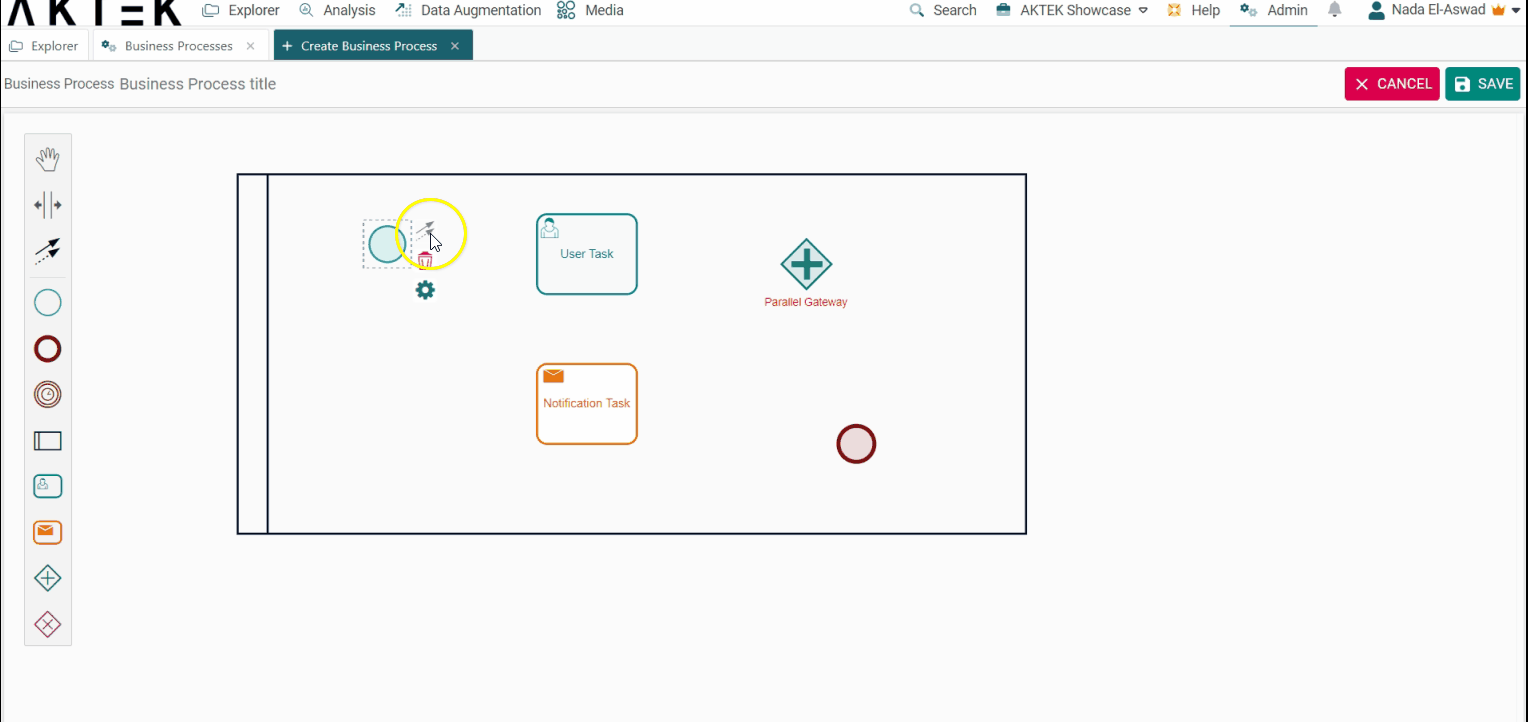This feature enables users to develop internal procedures using a standard graphical notation
Table of contents
- What is a Business Process?
- What is a Workflow?
- Swim Lanes on AKTEK iO
- Flow Objects on AKTEK iO
- Tasks and Gateways
- Connecting Objects
What is a Business Process?
A Business Process Model and Notation provides organizations with the capability of understanding their internal workflows and procedures in a graphical notation, and will give them the ability to communicate these procedures in a standard manner.
What is a Workflow?
It’s a series of repeatable processes that are necessary in order to achieve a goal, typically a business or organizational goal. The first step of a workflow is triggered by an outside event, but every step after that has another step before and after it within the process.
Business Process' three basic element categories in AKTEK iO are:
- Swim lanes: Pool, lane
- Flow objects: Events, activities, gateways
- Connecting objects: Sequence flow, message flow, association
Swim Lanes on AKTEK iO
Swim lanes are a visual mechanism for organizing and categorizing activities and in Business Process, they consist of two types: Pools and lanes.
In this case, the Pool or Participant icon represents major participants in a process, typically separating different organizations. In AKTEK iO this will allow you to separate different users or user groups.
Pools can be divided into Lanes. They are used to organizing and categorize activities within a pool according to function or role, you could, for example, divide your pool into different lanes to differentiate the tasks done by one group of users from another.
A lane contains the flow objects, connecting objects, and artifacts.
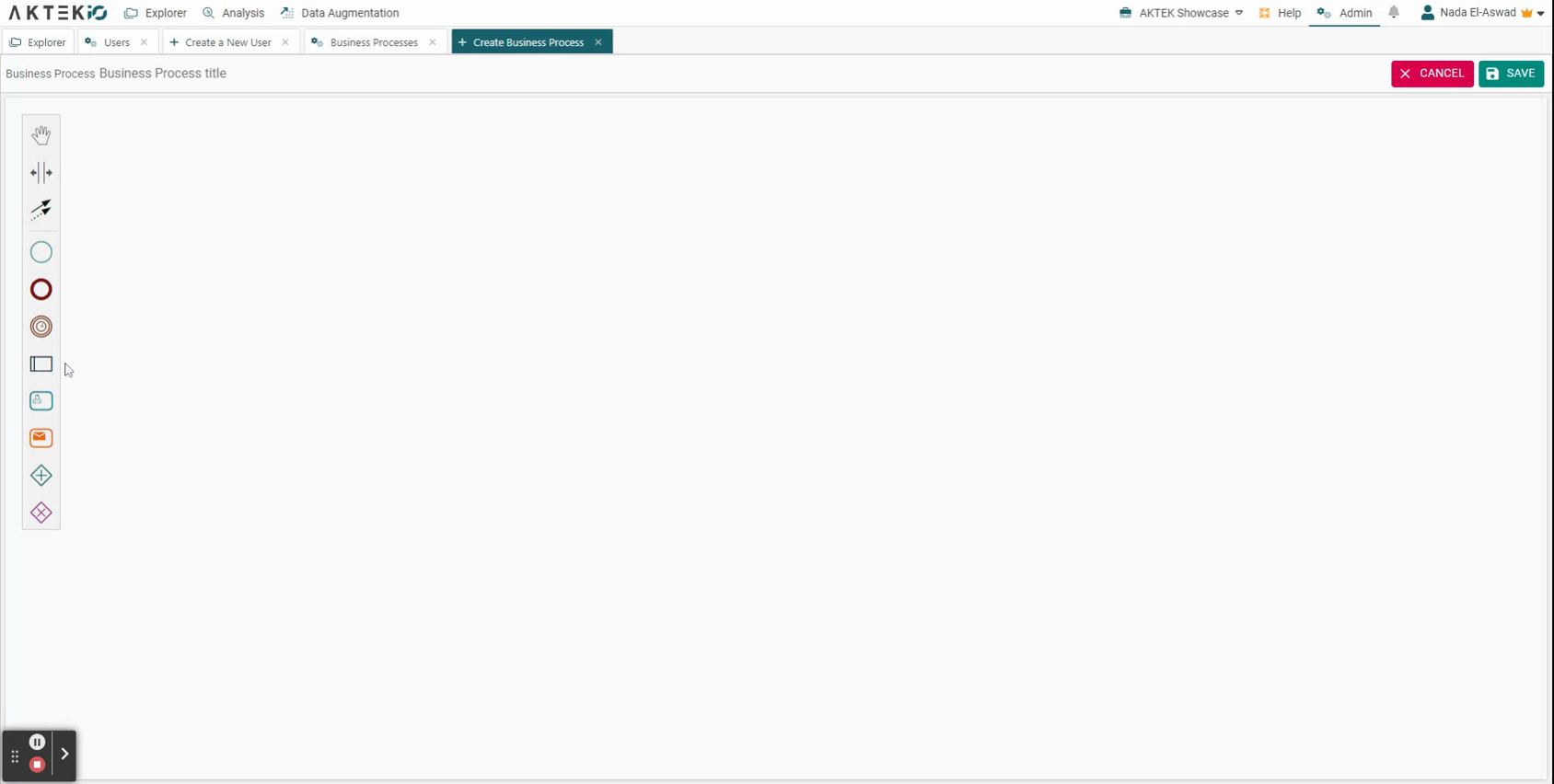
Flow Objects on AKTEK iO
Events
First, we have a Start event that acts as a process trigger; indicated by a single narrow border.
Second, we have End events that represent the result of a process; indicated by a single thick or bold border.
Finally, we have the Deadline, which represents the maximum time given to this task. When a deadline is reached, the process will continue automatically to the next task.
- Start event: indicated in blue by a single narrow border.
- End event: indicated in red by a single thick or bold border.
- Deadline: indicated in red by 2 circles with a clock in the middle.
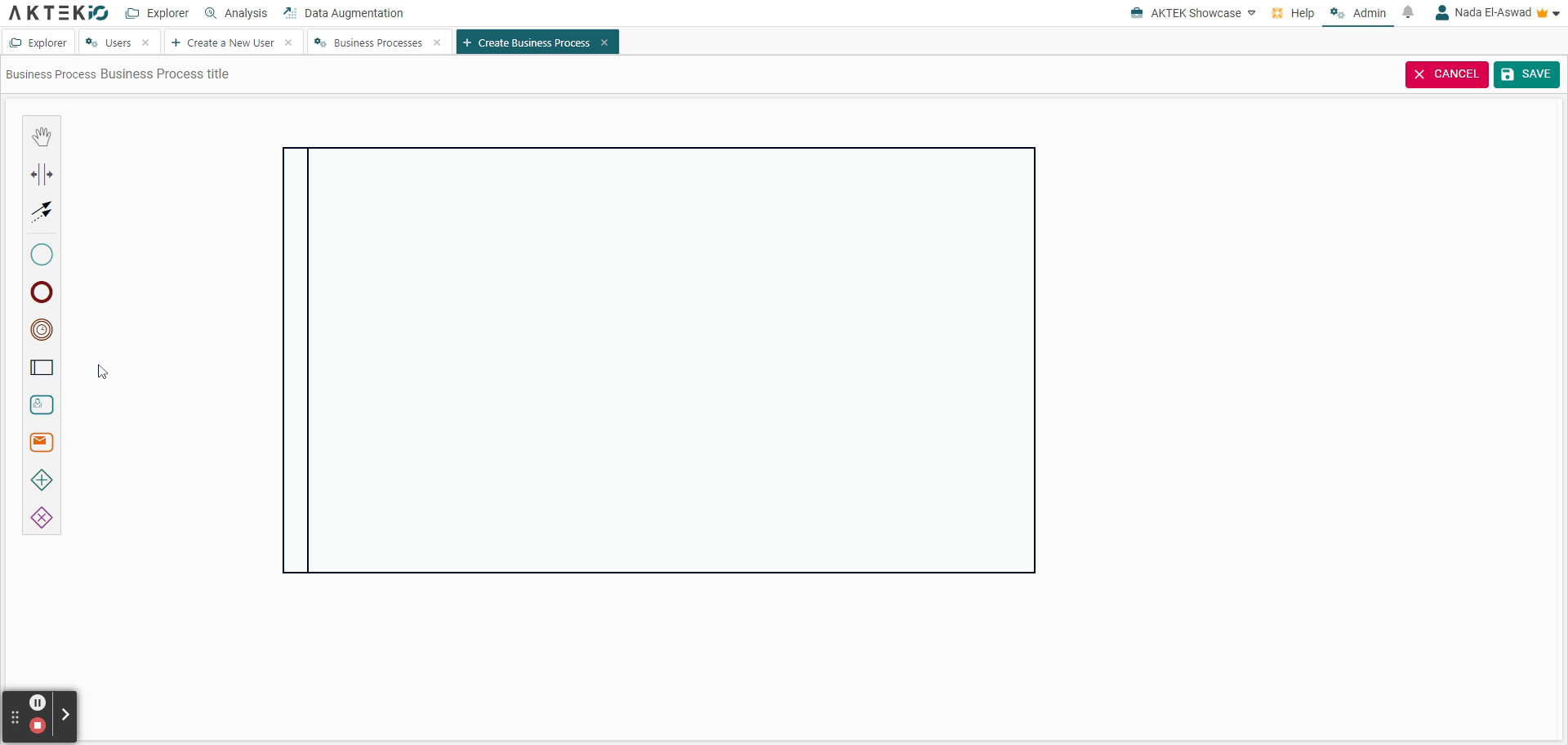
Tasks and Gateways
A Task is represented with a rounded-corner rectangle and describes the kind of work (or task) which must be done.
In AKTEK iO, we have two types of tasks:
- User task, which represents the work to be done by a user (or group of users)
- Notification task (sent by the system).
If we have a set of tasks, this may represent a high-level procedure.
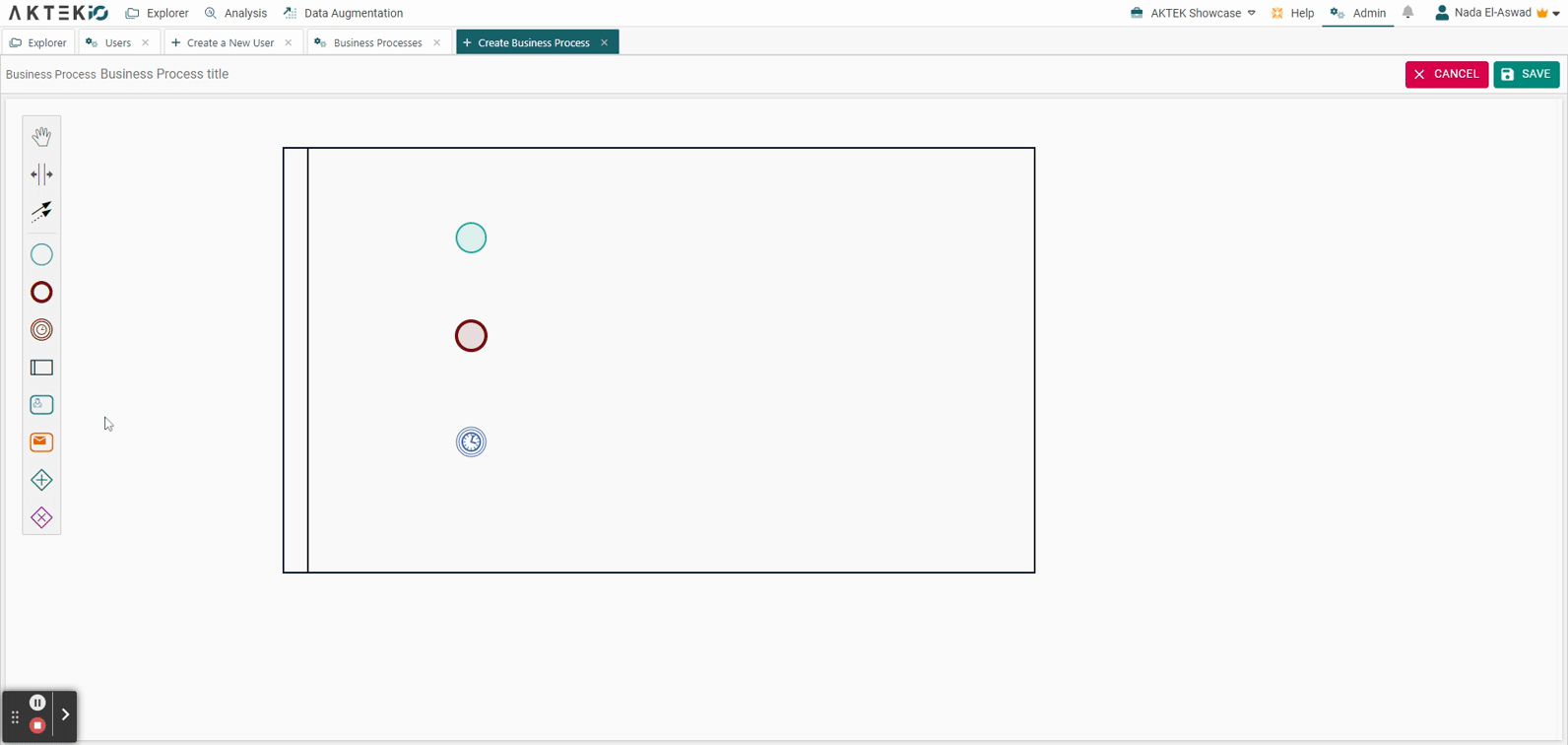
Right below Tasks, we have our diamond-shaped icons called Gateways, this is also a flow object.
In AKTEK iO, we have 2 different types of gateways, Exclusive and Parallel.
- A Parallel Gateway is represented by a plus sign in the middle (+). It is used to create parallel paths without evaluating any conditions. This means that there is a branching point of possible paths that the user can choose from.
- An Exclusive Gateway is represented by a multiple sign in the middle (x). It provides possible paths depending on the value of a certain field from an incoming task. An exclusive gateway can have one or many connected outgoing next tasks.
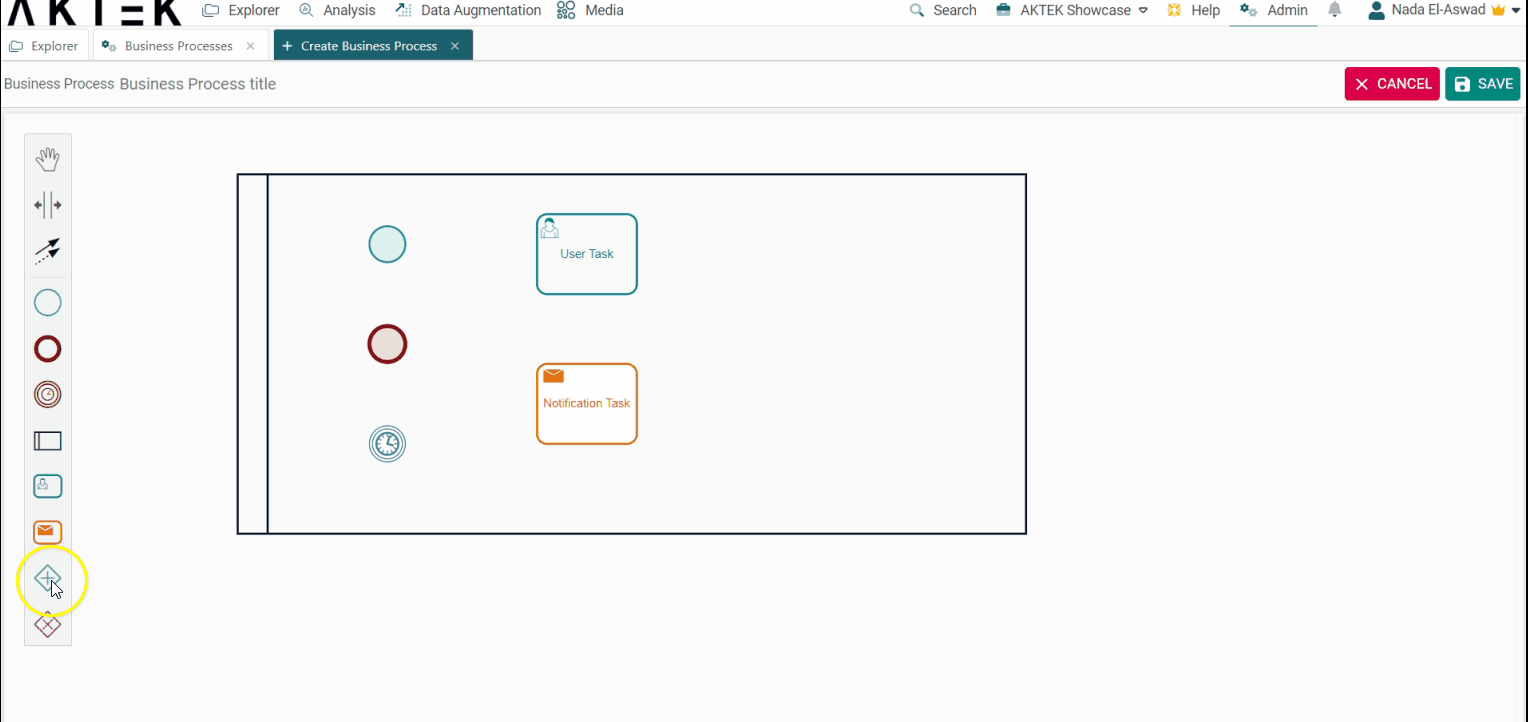
Connecting Objects
Flow objects are connected to each other using Sequence Flow connecting objects.
This sequence flow connects the different flow objects mentioned above: events, gateways, tasks, or sometimes pools.
A Sequence Flow is represented with a solid line and arrowhead and shows in which order the activities are performed.
In conclusion, a Business Process will allow you to:
- Visualize your business process
- Document a process
- Do an analysis of your business processes
- Discuss the process using a common language
